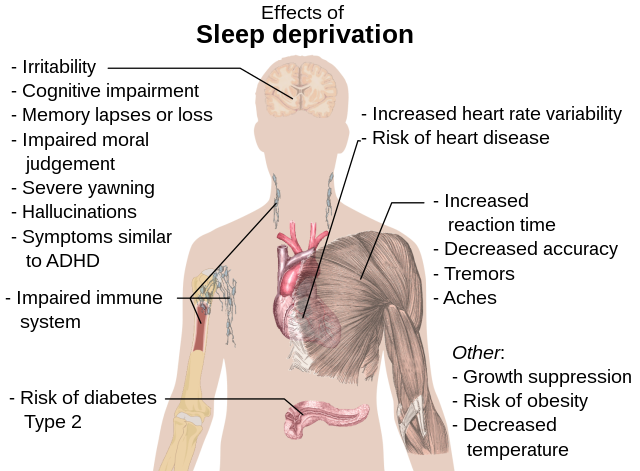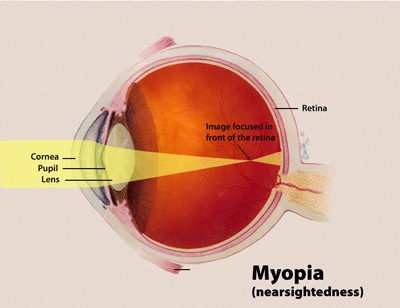
A sleeping child (Cr. JarektUploadBot via Wikimedia Commons)
Are you getting enough sleep lately? You probably know that sleep deprivation is bad for you, but to what extent? Now, a study showed that a lack of sleep affects the gene mechanisms that control metabolism, sleep and immunity. Just one week of insufficient sleep can cause changes to over 700 genes! Yikes!
Before this study was done, scientists linked long-term sleep deprivation with obesity, heart disease and cognitive impairment. However, the actual molecular mechanisms that led to these effects were not known.

The effects of sleep deprivation (Cr. Mikael Häggström via Wikimedia Commons)
Now, British researchers at Surrey University in England showed that long-term sleep deprivation directly alters gene expression for processes such as immune responses, stress and metabolism. All of the above mentioned affects have a wide range of negative effects, especially if the health issues last a long time.
In this study, researchers had 26 healthy volunteers (as in, no illnesses), but were deprived of sleep. They then examined the gene expressions in the volunteers. The people in the “sleep-deprived” group only had about 6 hours of sleep for 7 days consecutively, while the people in the control group had about 10 hours of sleep. At the end of the week, participants had their blood RNA samples taken.
Both groups were observed and had many tests taken to determine their cognitive performance during the day. The participants in the study were also asked how they slept. Finally, researchers measured levels of the hormone melatonin, which regulates biological rhythm and sleep cycles.
The chemical structure of RNA (Cr. InfoCan via Wikimedia Commons)
RNA analysis of the blood samples showed that activity in 711 genes were decreased or increased from the lack of sleep. As it turns out, every gene is responsible for the creation of a protein that is important in the body. And RNA is needed to carry out the message from each gene to create those proteins. If the amount of RNA changes from its normal levels, then this means that there are now more or less of the messages getting sent to create the proteins. This can ultimately lead to dramatic changes in the body.
Changes to different genes caused different reactions. Many of the genes that were affected were involved in maintaining the “biological clock” or the circadian rhythm. It is what tells us what is supposed to happen in a 24-hour clock. Other genes were known for their overall gene expression – that is, the lack of sleep will cause harmful changes to the body. Finally, through the study, it was shown that participants also had bad test results on memory, cognition and attention.

Here’s a short overview on sleep deprivation and its effects on genes! (via. Youtube user: DNewsChannel)
So, what exactly should we take from all of this? It’s definitely time to sleep more!
– Maggie Chan









